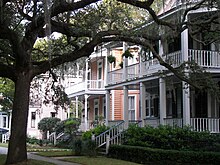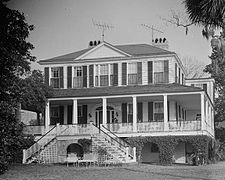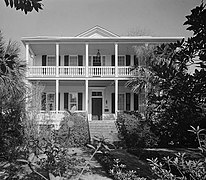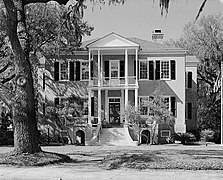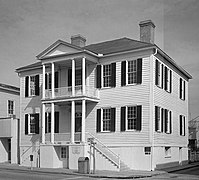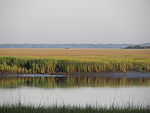
Beaufort is a town in and the county seat of Carteret County, North Carolina, United States. Established in 1713 and incorporated in 1723, Beaufort is the fourth oldest town in North Carolina . On February 1, 2012, Beaufort was ranked as "America's Coolest Small Town" by readers of Budget Travel Magazine.

Morehead City is a port town in Carteret County, North Carolina, United States. The population was 8,661 at the 2010 census. Morehead City celebrated the 150th anniversary of its founding on May 5, 2007. It forms part of the Crystal Coast.

Beaufort is a city in and the county seat of Beaufort County, South Carolina, United States. Chartered in 1711, it is the second-oldest city in South Carolina, behind Charleston, which was established in 1670. A city rich in history, culture, southern hospitality, and a seaside charm, Beaufort is affectionally known as the "Queen of the Carolina Sea Islands". The city's population was 13,607 at the 2020 census. It is part of the Hilton Head Island–Bluffton metropolitan area.

Bluffton is a town in southern Beaufort County, South Carolina, United States. The population as of the 2020 census was 27,716, an increase of over 120% since 2010, making it one of the fastest growing municipalities in South Carolina. Bluffton is the fifth largest municipality in South Carolina by land area. It is primarily located around U.S. Route 278, between Hilton Head Island and Interstate 95. The Lowcountry town's original one square mile area, now known as Old Town, is situated on a bluff along the May River. The town is a primary town within the Hilton Head Island–Bluffton Metropolitan Area.
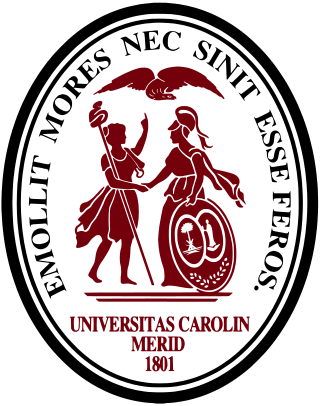
The University of South Carolina Beaufort is a public college with three campuses in the Lowcountry region of South Carolina. It is part of the University of South Carolina System, enrolls about 2,000 students, and offers over 20 programs of study. The main campus is in Bluffton, South Carolina. The institution's campus in Beaufort houses the school's honor programs and the Department of Visual Arts & Design. The campus location on Hilton Head Island is home to the institution's program for hospitality management.

Daufuskie Island, located between Hilton Head Island and Savannah, is the southernmost inhabited sea island in South Carolina. It is 5 miles (8 km) long by almost 2.5 miles (4.0 km) wide – approximate surface area of 8 square miles (21 km2). With over 3 miles (5 km) of beachfront, Daufuskie is surrounded by the waters of Calibogue Sound, the Intracoastal Waterway and the Atlantic Ocean. It was listed as a census-designated place in the 2020 census with a population of 557.

The French Quarter is a historic district and a section of downtown Charleston, South Carolina, United States, that is listed on the National Register of Historic Places.

Robert Smalls was an American politician, publisher, businessman and maritime pilot. Born into slavery in Beaufort, South Carolina, he freed himself, his crew and their families during the American Civil War by commandeering a Confederate transport ship, CSS Planter, in Charleston harbor, on May 13, 1862, and sailing it from the Confederate-controlled waters of the harbor to the U.S. blockade that surrounded it. He then piloted the ship to the Union-controlled enclave in Beaufort–Port Royal–Hilton Head area, where it became a Union warship. His example and persuasion helped convince President Abraham Lincoln to accept African-American soldiers into the Union Army.
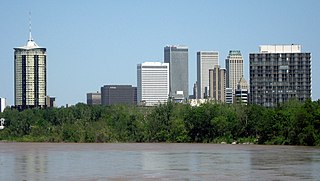
Tulsa is the second-largest city in the state of Oklahoma. It has many diverse neighborhoods due to its size.

The Barnwell-Gough House, also known as Old Barnwell House, is a house built in Beaufort, South Carolina in 1789.

The Robert Smalls House is a historic house at 511 Prince Street in Beaufort, South Carolina. Built in 1843 and altered several times, the house was designated a National Historic Landmark in 1974 for its association with Robert Smalls (1839-1915). Smalls, born into slavery, achieved notice for commandeering the CSS Planter and sailing her to freedom during the American Civil War. After the war he represented South Carolina in the United States House of Representatives during Reconstruction.
Frogmore is an unincorporated community on St. Helena Island in Beaufort County, South Carolina, United States, along U.S. Route 21.

Tabby Manse, also known as Thomas Fuller House, is a building in Beaufort, South Carolina.

John Mark Verdier House, also known as Lafayette Building, is a building in Beaufort, South Carolina. It was built by John Mark Verdier, a French Huguenot, in 1804. The house typified Beaufort's gracious antebellum architectural style. It was a focal point of the town, a visible statement reflecting Verdier's significant wealth from trading indigo and growing sea island cotton.

Marshlands, also known as the James Robert Verdier House, is a historic house at 501 Pinckney Street in Beaufort, South Carolina. Built about 1814, it is a high quality and well-preserved example of early Beaufort architecture, showing both Adamesque and West Indian stylistic influences. It is also notable as a home of Dr. James Robert Verdier, who discovered a treatment for yellow fever. It was designated a National Historic Landmark in 1973 for its architectural significance.
Isaac Fripp House Ruins is a historic house ruin and archaeological site located on Saint Helena Island near Frogmore, Beaufort County, South Carolina. The ruins are located at Bay View overlooking the junction of Chowan Creek and the Beaufort River. The two-story, tabby house dates to the early- to mid-19th century. It is associated with Isaac Fripp, a planter of sea island cotton and other staples on St. Helena Island.
Orange Grove Plantation is a historic plantation house and national historic district located on Saint Helena Island near Frogmore, Beaufort County, South Carolina. The district encompasses one contributing building and two contributing sites, and reflects the early-20th century influx of Northerners onto St. Helena Island. The plantation was first recorded in 1753 when Peter Perry purchased 473 acres. Perry owned 46 chattel slaves. The plantation house, built about 1800, was in poor condition when Henry L. Bowles (1866-1932), a U.S. Representative from Massachusetts, bought the property in 1928. He demolished it and built the present house in the same year. The property also includes the tabby ruin of the kitchen, built about 1800, and a tabby-walled cemetery containing three early-19th century graves of the Fripp and Perry families.
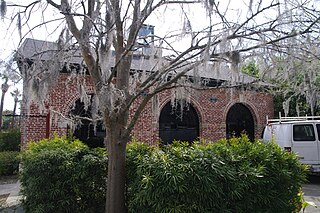
The Reconstruction Era National Historical Park, formerly Reconstruction Era National Monument is a United States National Historical Park in Beaufort County, South Carolina established by President Barack Obama in January 2017 to preserve and commemorate activities during the Reconstruction Era that followed the American Civil War. The monument was the first U.S. National Monument dedicated to the Reconstruction Era. The John D. Dingell, Jr. Conservation, Management, and Recreation Act, signed March 12, 2019, by President Donald Trump, re-designated it as a national historical park. It is administered by the National Park Service.

The Cobbler's Cottage is a ca-1870 historic cottage in the United States National Historic Landmark District – Beaufort Historic District. The Cobbler's Cottage is a contributing property, # U-13-1013, of the Beaufort Historic District making the cottage a recognized member of the “National Register of Historic Places”. The Cobbler's Cottage is located at Block 66, Lot C, 713 Charles Street, Beaufort, South Carolina.

The Rhett House Inn, is a historic Inn at 1009 Craven Street, Beaufort, South Carolina. It is significant as the home of Thomas Moore Rhett and his wife, Caroline Barnwell, who were early pioneers in South Carolina in the 1800s. The Inn is in the Point neighborhood, which is part of the Beaufort Historic District. Today, the Rhett House Inn serves as a Four Diamond bed and breakfast Inn.



